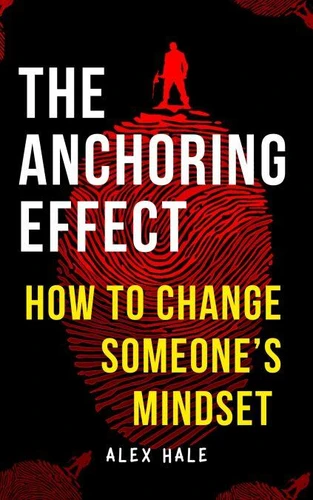The Anchoring Effect
Par :Formats :
Actuellement indisponible
Cet article est actuellement indisponible, il ne peut pas être commandé sur notre site pour le moment. Nous vous invitons à vous inscrire à l'alerte disponibilité, vous recevrez un e-mail dès que cet ouvrage sera à nouveau disponible.
Disponible dans votre compte client Decitre ou Furet du Nord dès validation de votre commande. Le format ePub est :
- Compatible avec une lecture sur My Vivlio (smartphone, tablette, ordinateur)
- Compatible avec une lecture sur liseuses Vivlio
- Pour les liseuses autres que Vivlio, vous devez utiliser le logiciel Adobe Digital Edition. Non compatible avec la lecture sur les liseuses Kindle, Remarkable et Sony
 , qui est-ce ?
, qui est-ce ?Notre partenaire de plateforme de lecture numérique où vous retrouverez l'ensemble de vos ebooks gratuitement
Pour en savoir plus sur nos ebooks, consultez notre aide en ligne ici
- FormatePub
- ISBN8201424398
- EAN9798201424398
- Date de parution08/06/2021
- Protection num.pas de protection
- Infos supplémentairesepub
- ÉditeurJL
Résumé
The anchoring effect is a cognitive bias whereby an individual's decisions are influenced by a particular reference point or 'anchor'. Once the value of the anchor is set, subsequent arguments, estimates, etc. Made by an individual may change from what they would have otherwise been without the anchor. Anchoring bias can benefit decision making as it can help us make reasonable estimates based on limited information.
However, it can also lead to significant mistakes. When we rely too heavily on one piece of information, it restricts our ability to think logically and consider other aspects that need to be considered. What is anchoring bias? Anchoring bias occurs when people rely too much on pre-existing information or the first information they find when making decisions. For example, if you first see a t-shirt that costs $1, 200 - then see a second one that costs $100 - you're prone to see the second shirt as cheap.
The anchoring effect is a cognitive bias that describes the common human tendency to rely too heavily on the first piece of information offered (the "anchor") when making decisions. During decision making, anchoring occurs when individuals use an initial piece of information to make subsequent judgments.
However, it can also lead to significant mistakes. When we rely too heavily on one piece of information, it restricts our ability to think logically and consider other aspects that need to be considered. What is anchoring bias? Anchoring bias occurs when people rely too much on pre-existing information or the first information they find when making decisions. For example, if you first see a t-shirt that costs $1, 200 - then see a second one that costs $100 - you're prone to see the second shirt as cheap.
The anchoring effect is a cognitive bias that describes the common human tendency to rely too heavily on the first piece of information offered (the "anchor") when making decisions. During decision making, anchoring occurs when individuals use an initial piece of information to make subsequent judgments.
The anchoring effect is a cognitive bias whereby an individual's decisions are influenced by a particular reference point or 'anchor'. Once the value of the anchor is set, subsequent arguments, estimates, etc. Made by an individual may change from what they would have otherwise been without the anchor. Anchoring bias can benefit decision making as it can help us make reasonable estimates based on limited information.
However, it can also lead to significant mistakes. When we rely too heavily on one piece of information, it restricts our ability to think logically and consider other aspects that need to be considered. What is anchoring bias? Anchoring bias occurs when people rely too much on pre-existing information or the first information they find when making decisions. For example, if you first see a t-shirt that costs $1, 200 - then see a second one that costs $100 - you're prone to see the second shirt as cheap.
The anchoring effect is a cognitive bias that describes the common human tendency to rely too heavily on the first piece of information offered (the "anchor") when making decisions. During decision making, anchoring occurs when individuals use an initial piece of information to make subsequent judgments.
However, it can also lead to significant mistakes. When we rely too heavily on one piece of information, it restricts our ability to think logically and consider other aspects that need to be considered. What is anchoring bias? Anchoring bias occurs when people rely too much on pre-existing information or the first information they find when making decisions. For example, if you first see a t-shirt that costs $1, 200 - then see a second one that costs $100 - you're prone to see the second shirt as cheap.
The anchoring effect is a cognitive bias that describes the common human tendency to rely too heavily on the first piece of information offered (the "anchor") when making decisions. During decision making, anchoring occurs when individuals use an initial piece of information to make subsequent judgments.



